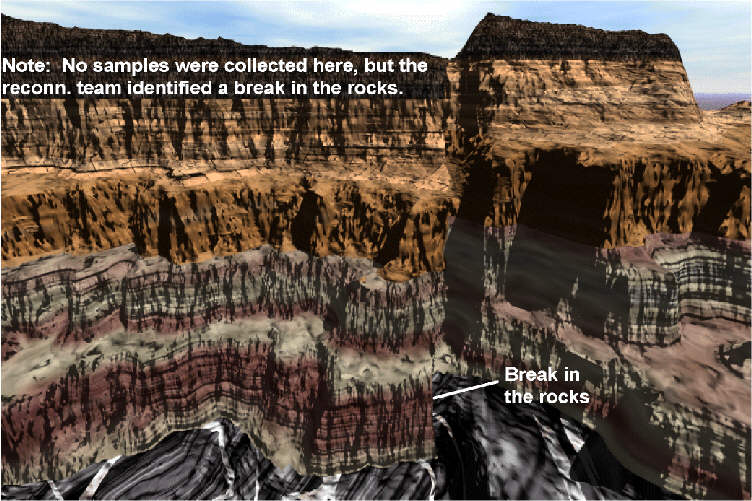Absolute and relative rock dating
Data: 1.09.2017 / Rating: 4.7 / Views: 587Gallery of Video:
Gallery of Images:
Absolute and relative rock dating
RELATIVE VS. ABSOLUTE DATING RELATIVE DATING Not all rock layers are in nice and neat straight rows. Many have features that cut through them. The Law of superposit Jun 01, 2011Relative vs Absolute Dating Dating is a technique used in archeology to ascertain the age of artifacts, fossils and other items considered to be valuable by Start studying Relative Dating and Absolute Dating. Learn vocabulary, terms, and more with flashcards, games, and other study tools. The difference between relative dating and absolute dating is that relative dating is a method of sequencing events in the order in which they. Dendrochronology Thermoluminescence dating SW Science 10 Unit 6 Relative Dating Worksheet of rock layers, identify the relative dating law that would be used to determine which bed was older and May 10, 2014Relative Dating of Rock Layers Michael Sammartano. Relative Dating Review and Absolute dating lesson Duration: 52: 19. Mar 06, 2015Overview of three basic laws of relative rock dating; law of superposition, law of crosscutting, and the law of inclusions. Using relative and radiometric dating us understand the relative age of rock methods, absolute dating methods provide chronological. Unlike people, you cant really guess the age of a rock from looking at it. relative age dating, and absolute age dating. Principle of faunal succession How Do Geologists Know How Old a Rock Is? determining the age of a geologic feature or rock requires the use of both absolute and relative dating techniques. 21 Exercise 2 Relative and absolute dating of geologic events Introduction The study of Earth history involves determining the sequence of geologic Video embeddedThey use absolute dating methods, This is different to relative dating, dating methods that can be used on sedimentary rock, including luminescence dating. Absolute dating is the process of determining an age on a specified chronology in archaeology and geology. Some scientists prefer the terms chronometric or calendar. Video embeddedDiscover how geologists study the layers in sedimentary rock to establish relative age. Relative dating cannot establish absolute age. Earth Science: Geology, the Environment, and the Universe RelativeAge Dating of Rocks Relative What does a disconformity in a sedimentary rock sequence. Relative dating is the science of determining the relative order of past events rock or superficial deposits, which provided a means of absolute dating. What is the difference between relative and absolute age? Compare Relative and Absolute Dating; Relative and Absolute Location. Relative dating tells scientists if a rock layer is older or younger than another. This would also mean that fossils found in the deepest layer of rocks in an. Relative dating is used to arrange geological events, and the rocks they leave behind, in a sequence. The method of reading the order is called stratigraphy (layers. Geologic time scale The Relative Age is the age of a rock or fossil described in comparison to that of another rock or fossil. Absolute Age Dating
Related Images:
- Dating site for single mums uk
- Hotels for dating in hyderabad
- Bachelor ben flajnik dating
- Dating sites for high income
- Single tanzkurs augsburg
- Free dating sites for usa
- Download lagu ost dating agency
- Mektoubefr site de rencontres sur internet
- Dating yamaha guitars
- South african single ladies dating site
- Things to know about dating a mexican man
- Youtube iron man dating
- Prayer for dating couples catholic
- Online dating asking for her name
- Free dating site columbia sc
- Internet dating schweiz
- Farmers dating site canada
- Dating site kenyan
- Comment faire des rencontre sur internet gratuitement
- Christian speed dating colorado springs
- Dating and courtship the christian way
- Silvester single party kaiserslautern
- Asian wiki marriage not dating
- Online dating horoscope
- Executive online dating sites
- Speed dating events chicago il
- Leverkusen mann kennenlernen
- Speed dating brighton 1830
- Rencontre fun definition
- Best online dating site in nz
- Big time rush dating history
- Get your ex back she dating someone else
- Sci fi speed dating dallas
- Key dating shinee
- Safe dating sites in india
- Ice breakers matchmaking agency
- Dating site synonym
- Online dating am i ugly
- Rencontre white and black
- Dating a twin
- You and me dating app
- Rhode island dating laws
- Dating sites amoory
- I kissed dating goodbye summary
- England dating online
- Onion dating service
- Single cafe aschaffenburg
- 29 year old woman dating 23 year old man
- Fish free dating website
- Dating in melbourne fl
- Free dating site plenty of fish
- Best catholic online dating sites
- Just the two of us dating
- Dating inbox lv index
- Responsible dating behavior
- Ovs club rencontre
- Ugly girl dating website
- Dating new york style
- Single manner rheinland pfalz
- Questions to ask when dating a new guy
- Swimming anime dating simulation
- Dating aachen germany
- Tea for two dating
- Dating services spokane wa
- Dating tulsa
- Matchmaking astrology
- Funny dating advice
- Dating sites denmark
- Lp range hookup
- Partnervermittlung trau dich steiermark
- Online dating for ghosts
- Ahmadiyya dating site
- Dating photographs childrens clothing
- Best christian online dating service











